2-Ingredient Easy Homemade and Creamy Ricotta Cheese

2-Ingredient Homemade Ricotta is a basic preparation that is easy to make at home: a creamy product, which is prepared starting from fresh whole milk and following a few simple steps.
While classic ricotta is a dairy product obtained by cooking a second time (hence "re-cooking") the residual whey from the preparation of cheeses, our recipe, instead, requires a different procedure. In fact, homemade ricotta is the result of the curdling of fresh whole milk, which is heated and then added to citric acid in the form of lemon juice.
To prepare it you will need only 2 ingredients: fresh whole milk and lemon, which you can replace with apple cider vinegar, rice vinegar or wine vinegar for a less strong flavor. In addition, you will need a large pot, a wooden spoon, a strainer, a cloth, a basket and a kitchen thermometer.
With the indicated doses you will get about 17 ounces (500gr) of ricotta: silky and with a delicate flavor, it will be perfect to use as an ingredient in many different recipes, both sweet and savory. It is also excellent for breakfast and snacks, enriched with sugar or honey: it will conquer adults and children at the first taste.
What is Ricotta Cheese?
Ricotta has ancient origins, dating back to the Bronze Age when early Mediterranean civilizations, particularly the Egyptians, Greeks, and Romans, developed techniques to make cheese from leftover whey. The name ricotta comes from the Latin recoctus, meaning “recooked,” referring to the process of reheating whey to extract the soft, creamy curds. Ricotta became a staple in Italian cuisine, especially in regions like Sicily and Campania, where shepherds and farmers relied on it as an essential source of protein.
Over time, Italian immigrants carried their cheesemaking traditions to the Americas and beyond, helping ricotta gain global popularity. As industrial production increased, ricotta became widely available in supermarkets, yet many home cooks sought to recreate its fresh, delicate flavor using simple ingredients like milk, lemon juice, or vinegar. This revival of homemade ricotta recipes, like the one found in traditional Italian kitchens, allows modern cooks to enjoy an authentic taste of history with minimal effort, bringing an age-old practice into contemporary homes.
Pro Tips for The Best Homemade Ricotta Cheese
- Slowly bring the milk to a gentle simmer rather than boiling it too quickly. This helps create tender, well-formed curds.
- While heating, stir occasionally to prevent scorching but avoid excessive stirring once the curds start forming, as this can break them apart.
- Lemon juice or white vinegar are commonly used to separate the curds from the whey. Fresh lemon juice gives a milder flavor, while vinegar results in a slightly firmer texture.
- Use a fine-mesh sieve or cheesecloth to drain the ricotta. For a creamier texture, strain for a shorter time; for a firmer ricotta, let it drain longer.
- For a unique twist, mix in fresh herbs, honey, or a drizzle of olive oil to customize the ricotta for sweet or savory dishes.
Is It Worth Making Your Own Ricotta?
Making your own ricotta is absolutely worth it if you value freshness, quality, and customization. Store-bought ricotta often contains stabilizers and lacks the rich, creamy texture of homemade versions. By making it yourself, you control the ingredients, ensuring a pure and natural product without additives. It’s also surprisingly simple and cost-effective, especially if you already have milk and an acid like lemon juice or vinegar on hand. Plus, homemade ricotta can be tailored to your taste—whether you prefer it creamier, firmer, saltier, or slightly tangy.
Which Milk is Best For Homemade Ricotta?
The best milk for homemade ricotta is fresh, whole milk because it has a higher fat content, resulting in a creamier, richer texture. Avoid ultra-pasteurized (UHT) milk, as the high-heat processing can prevent proper curd formation. If possible, choose organic or non-homogenized milk for a more natural, traditional ricotta. While goat’s milk or sheep’s milk can also be used for a unique flavor, cow’s milk is the most common and reliable choice for homemade ricotta.
Can I Use Anything Else Instead of Milk?
Yes, milk can be substituted with other dairy or plant-based options, but the results will vary. Goat’s milk and sheep’s milk can be used for a tangier, richer ricotta, while buffalo milk produces an ultra-creamy version. For a dairy-free alternative, nut milks (like almond or cashew) or soy milk can be curdled with acid, but the texture and flavor won’t be identical to traditional ricotta. Some vegan versions use blended nuts or tofu to mimic ricotta’s creaminess, but they don’t go through the same curdling process. If making authentic ricotta, dairy milk is the best choice.
How Long Will Homemade Ricotta Last?
Homemade ricotta usually lasts 3 to 4 days when stored in an airtight container in the refrigerator. For the best flavor and texture, it’s best enjoyed fresh. If it starts to develop an off smell, sour taste, or becomes watery, it’s time to discard it.
Why Isn't My Milk Curdling?
If your milk isn’t curdling when making ricotta, it could be due to using ultra-pasteurized milk, which has altered proteins that prevent curd formation. Ensure you’re heating the milk to 85-90°C (185-195°F) before adding acid, as too low or too high a temperature can affect the process. Not enough acid is another common issue—if curds don’t form, try adding a little more lemon juice or vinegar and let it sit.
Avoid over-stirring, as it can break up the curds before they fully develop. Lastly, low-fat or old milk may not have enough proteins and fat to separate properly, so always use fresh whole milk for the best results. If curds still don’t form, try reheating the mixture and adding more acid.
What Can I Use This Homemade Ricotta For?
Homemade ricotta is incredibly versatile and can be used in both sweet and savory dishes. For savory recipes, it’s perfect in lasagna, stuffed pasta (like ravioli or cannelloni), ricotta gnocchi, quiches, and savory tarts. It also makes a great spread for toast, mixed with herbs, olive oil, or honey.
For sweet dishes, ricotta shines in cheesecakes, cannoli filling, pancakes, ricotta cookies, and Italian desserts like cassata or sfogliatelle. It can also be blended with sugar and citrus zest for a light, creamy topping for fruit or toast.
What Can I Do With the Leftover Whey?
Leftover whey from making ricotta is packed with nutrients and can be used in many ways instead of being discarded. It can be added to soups, stews, or sauces for extra depth of flavor or used as a liquid substitute in bread, pizza dough, or pancakes to enhance texture.
Whey is also great for smoothies, oatmeal, or protein shakes due to its high protein content. Some people use it for fermenting vegetables, making homemade ricotta again (if enough proteins remain), or even as a natural plant fertilizer.
Can Homemade Ricotta be Made Ahead of Time?
Yes, homemade ricotta can be made ahead of time and stored in an airtight container in the refrigerator for up to 3–4 days. For the best texture and flavor, it's ideal to use it fresh, but if making it in advance, ensure proper storage to prevent drying out.
Can Homemade Ricotta Be Frozen?
It can! If you need to keep it longer, ricotta can be frozen for up to 2 months, though the texture may become slightly grainy after thawing. Stirring in a little cream or milk before using can help restore some of its creaminess.
How to Store Homemade Ricotta
To store homemade ricotta, place it in an airtight container and keep it in the refrigerator for up to 3–4 days. To prevent it from drying out, you can cover it with a thin layer of water or milk before sealing the container.
Ingredients
How to Make Homemade Ricotta
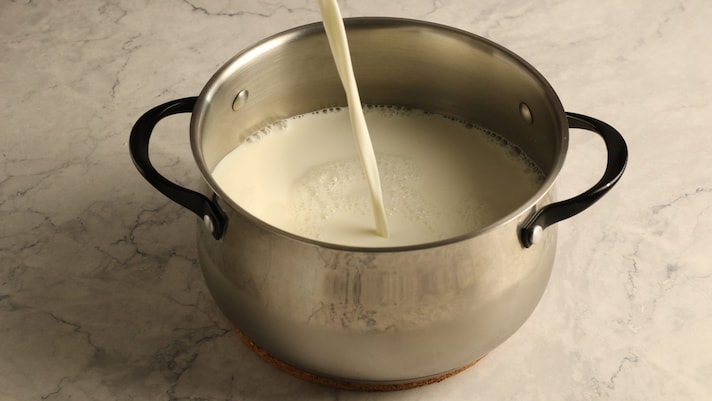
To prepare homemade ricotta, start by pouring the milk into a large saucepan. Then, heat it over a low flame.
To prepare homemade ricotta, start by pouring the milk into a large saucepan. Then, heat it over a low flame.
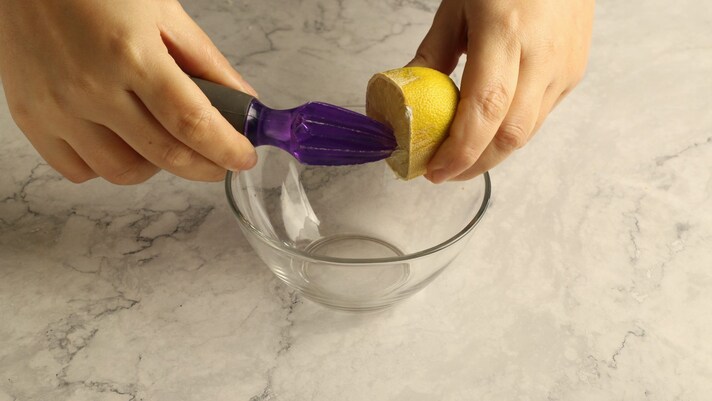
Meanwhile, squeeze the lemon, filter the juice through a fine mesh strainer and set aside.
Meanwhile, squeeze the lemon, filter the juice through a fine mesh strainer and set aside.
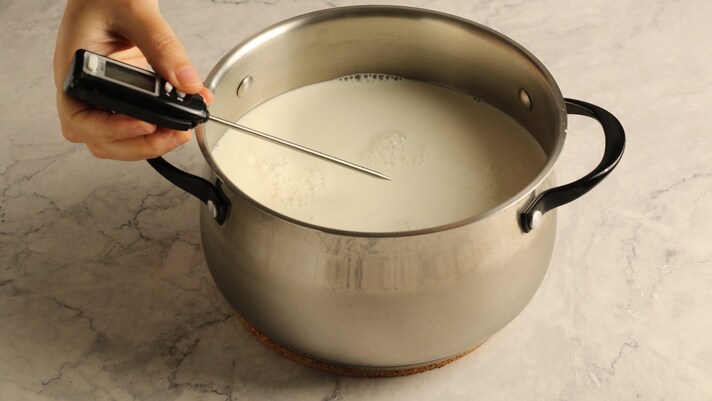
Bring the milk to a temperature between 185-194°F (85-90°C): to check the temperature, get a kitchen thermometer. Alternatively, you can use an empirical method and wait for the milk to foam a little around the edges.
Bring the milk to a temperature between 185-194°F (85-90°C): to check the temperature, get a kitchen thermometer. Alternatively, you can use an empirical method and wait for the milk to foam a little around the edges.
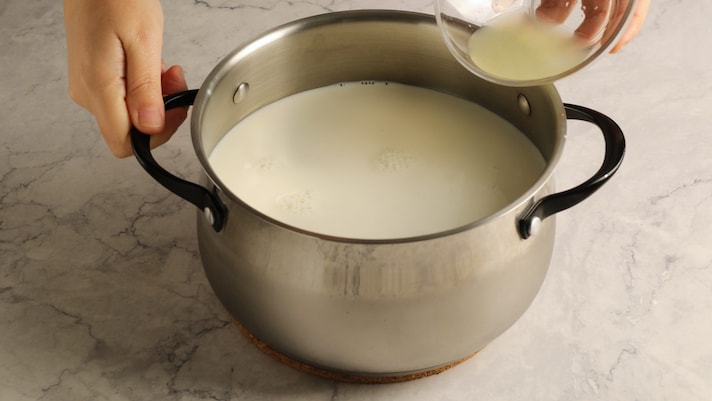
Once the indicated temperature is reached, quickly remove the milk from the heat and add the lemon juice, then mix with a wooden spoon: the first milk flakes will begin to form. Let it rest for about ten minutes.
Once the indicated temperature is reached, quickly remove the milk from the heat and add the lemon juice, then mix with a wooden spoon: the first milk flakes will begin to form. Let it rest for about ten minutes.
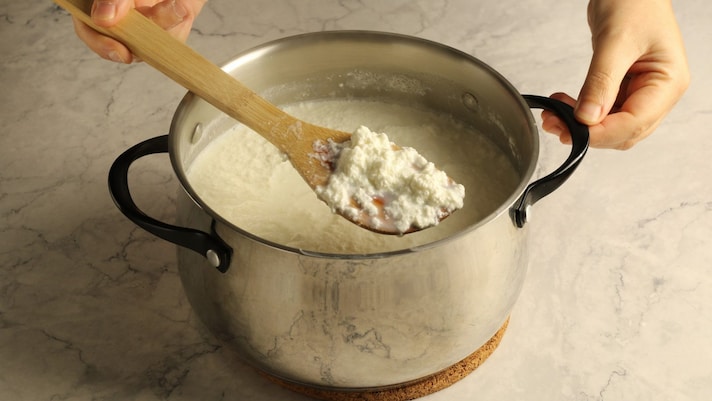
Take the pot again and mix again, breaking the curds.
Take the pot again and mix again, breaking the curds.
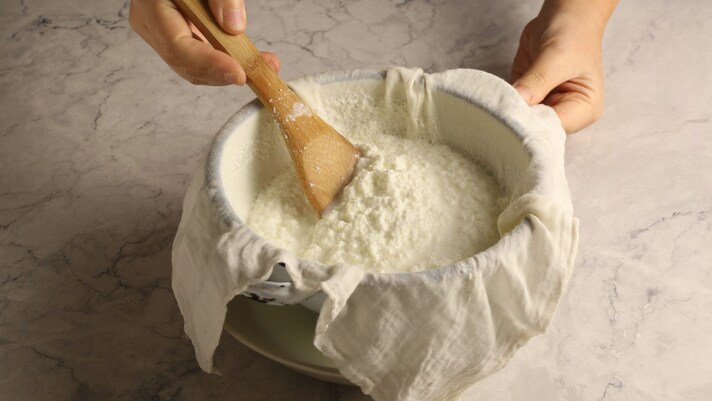
Line a colander with clean muslin, or a very thin tea towel, then pour in the curd and strain it to eliminate the excess liquid.
Line a colander with clean muslin, or a very thin tea towel, then pour in the curd and strain it to eliminate the excess liquid.
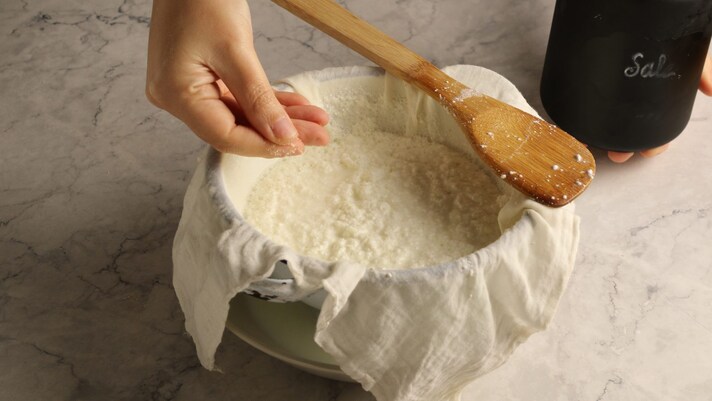
Add salt to your taste and mix again.
Add salt to your taste and mix again.
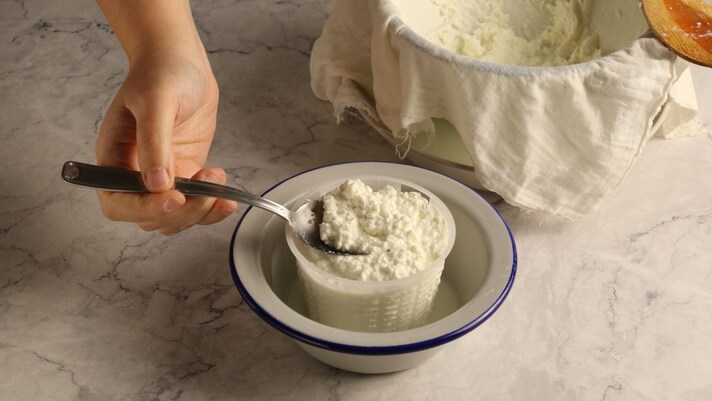
Transfer the cottage cheese into a classic ricotta container, compact the surface with the back of a spoon and leave to drain in a cool place or in the fridge for at least 2 hours.
Transfer the cottage cheese into a classic ricotta container, compact the surface with the back of a spoon and leave to drain in a cool place or in the fridge for at least 2 hours.
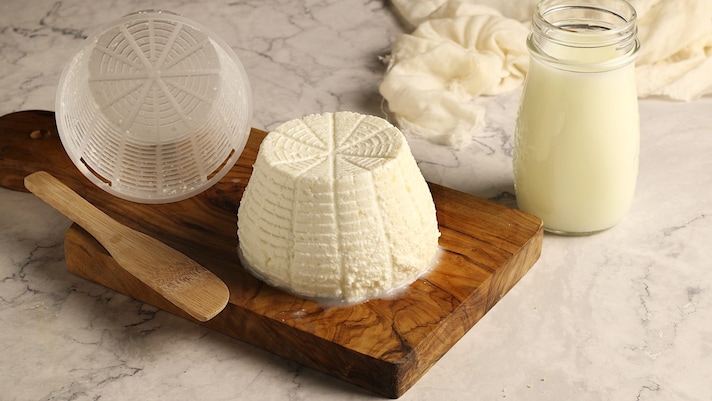
After the indicated time, turn the ricotta upside down onto a cutting board or a serving plate. Enjoy!
After the indicated time, turn the ricotta upside down onto a cutting board or a serving plate. Enjoy!
;Resize,width=767;)

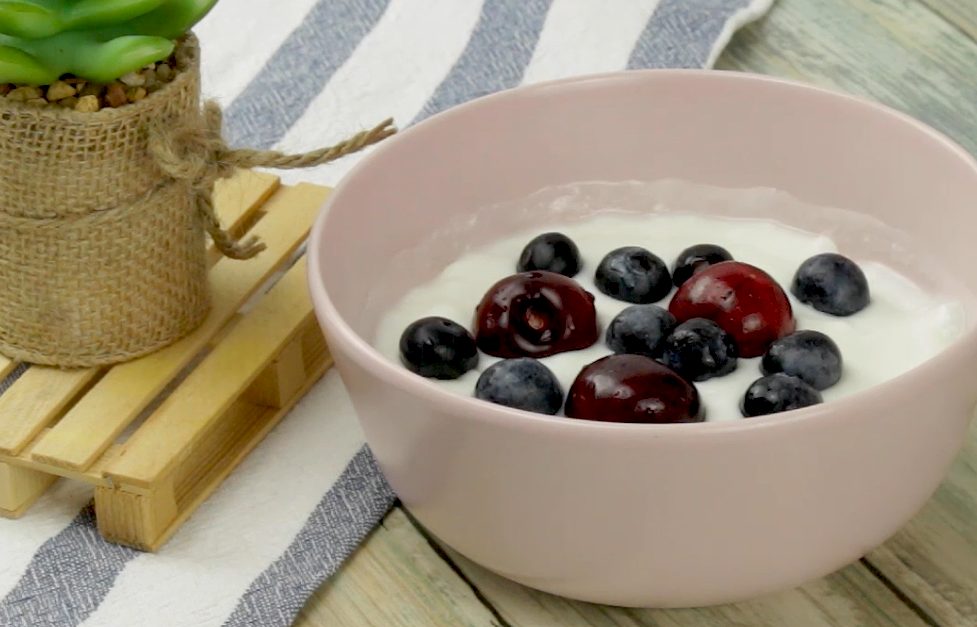;Resize,width=712;)
;Resize,width=712;)
